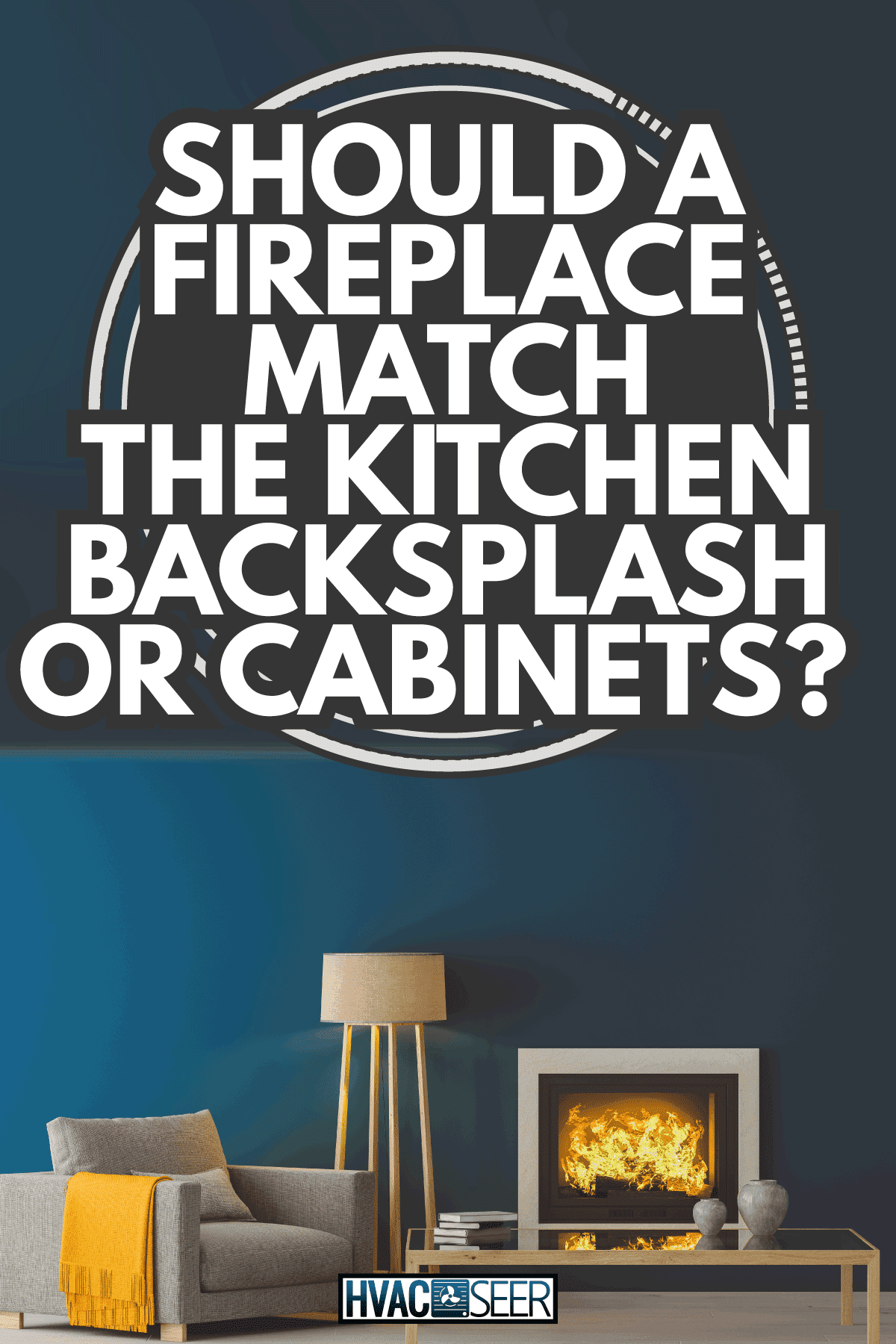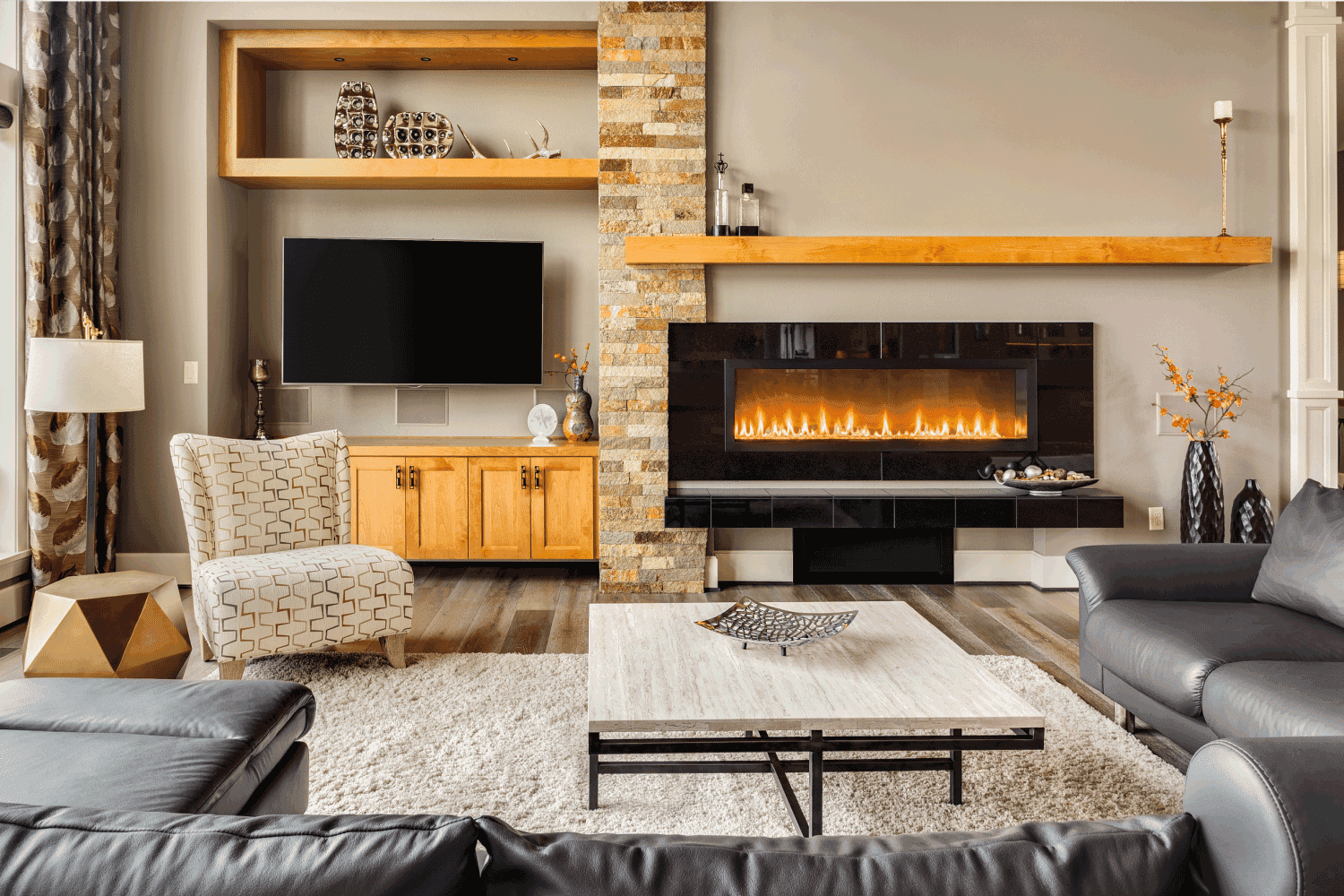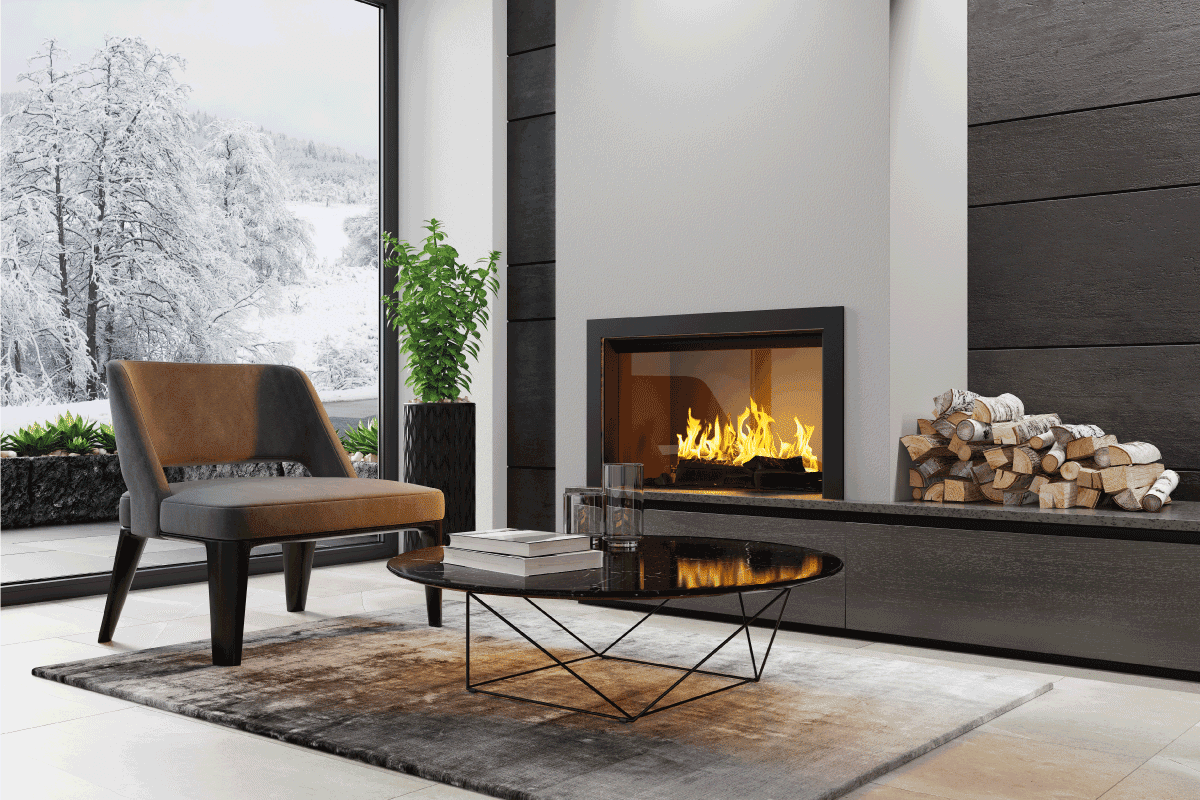In many homes, the fireplace may be located near the kitchen area. However, it's not uncommon to see these areas look like they belong in a completely different house. But should a fireplace match the kitchen backsplash or cabinet area? We have researched this question and will answer it in this post.
While there are no hard-and-fast rules on how to match a fireplace with the kitchen, you will typically see that it matches the kitchen cabinets instead of the backsplash. This is likely due to the fact that the cabinets typically take up a larger amount of space in the kitchen and can more easily complement the fireplace. However, you can also match or contrast it with the backsplash.
Matching your fireplace with your kitchen is fairly easy, and there are several different ways that you can do it. Continue reading to learn more about making these two areas go well together.

Connecting the Fireplace and Kitchen
Whether you decide to match the fireplace with the backsplash or the cabinets, it's important to have an overarching decorative flow that goes with both rooms.
This means that you should consider repeating similar colors or specific patterns in each room so that they feel connected. This can also include different fabrics, nearby window treatments, wall decor, or textures on both the fireplace and backsplash.

If you're thinking about matching the cabinets, consider contrasting colors that may help the fireplace stand out. Or if you're wanting to match it to the backsplash, perhaps use colors of the same hue that may call more attention to the mantle above the fireplace and have these two spaces match.
For example, if your mantle is brown and beige, consider adding brown or beige trim (or a complementing color) to the area around the backsplash (or choose a similar tile). It's all about cohesion at the end of the day, and you can achieve a more connected look when you're able to give each room its own identity while allowing them to create a feeling of unity.
Should my backsplash match my cabinets?
Deciding whether or not to match your backsplash with your cabinets can be a daunting task to consider. It helps to begin by thinking about the room as one unit.
While there are no set rules for decorating, it does help to have coordination with all of the colors in the room. It's also helpful to first consider the type of decor you want in the room.
For example, are you going with a modern or rustic feel? Do you prefer a dark-colored room or one with lighter hues and tones? Once you decide on the overall look, you can experiment with the main colors you want the room to encompass.
From there, it's best to start with the cabinets, as this will typically be the largest space and will take up the most space in the room. What color do you want your cabinets to be? Next, do you want the backsplash to make the cabinets stand out, or do you want the backsplash itself to stand out?
If you want the backsplash to stand out, it's best to make it a contrasting color. And if you want it to blend well with the cabinets, consider a similar color of a lighter or darker shade.
You can also include colors of a similar shade within certain backsplash areas. For example, if you have red cabinets, consider adding a few pieces of red tile around the trim or in the center of the backsplash to help the two areas blend better.
Should the backsplash be lighter or darker than the cabinets?
Typically, you'll find that most homes will have a backsplash that's lighter than the cabinets. Bright kitchens look lively and inviting, and cabinets usually match the countertops, which are usually darker to hide stains.
But if you want your kitchen to look as large and open as possible, consider using white, dark beige, or light grey as your backsplash. This can also help your darker cabinets stand out.
Consider a marbled design or irregularly-shaped tiles if you want a bold look. If this isn't as important to you, consider darker colors to contrast lighter cabinets.
You can also consider multi-color backsplash tiles, as they'll conceal dirt better than lighter tiles. Backsplashes are bound to become dirty and greasy, especially if you're someone who cooks every day. The best way to hide dirt is with marbled tiles, charcoal greys, and darker colors than all-white or lighter-toned colors.
When considering the color of the backsplash, you'll also want to consider its texture. For example, subway tile is typically white (or a lighter shade), but it's also made of ceramic, which makes it easy to clean.
If you go with glossy tiles, note that they can be cleaned quickly and are less likely to hold on to food and dirt stains. This makes them an ideal choice for homes with small children.
Are backsplashes going out of style?
Backsplashes aren't going out of style. However, the one style fits all approach to backsplashes is becoming an idea that's slowly fading out. For example, there are new elements and ideas with backsplashes that include the use of non-tile materials, various color patterns and textures, and different shapes for the entire area.
Backsplashes won't go out of style anytime soon, as they are still needed to prevent wall damage behind stovetops. However, the approach to installing them and their overall appearance is constantly changing.
What is the most popular backsplash for a kitchen?
There are quite a few different trendy backsplash patterns being used today. Let's take a look at the most common ones.
Extra Large Tiles
One common trend in most kitchens is the use of large tiles for the backsplash. Typically, you'll see these tiles used on floors or shower areas. However, their use as a kitchen backsplash material can be especially helpful in small kitchens that are tight on space.
You can find these tiles in sizes of 4x8 or 4x12 inches, though you can also order custom sizes as well. These larger tiles are great for creating a bigger perception of space in a tiny kitchen and can add a bit of continuity by being taken up to the ceiling.
Ceiling Backsplashes
For the most part, backsplashes will typically start at the top of the stove and extend up the wall about two to three feet high. However, backsplashes are now being taken up to the ceiling, which means that many homeowners are looking to break the mold and get a bit bolder with their kitchen decor.
A ceiling-height backsplash can give your kitchen a fresh and classic modern look without taking up too much space or requiring a complete kitchen overhaul. If you want to open up your kitchen, consider taking the backsplash up to the ceiling. Not only can it become a great focal point for the space, but it can create a bit of a visual break from the cabinetry in the kitchen.
Multiple Patterns or Textured
Here is where you can easily spend all of your decorating budget. The addition of multiple patterns and textures for your backsplash can do wonders for your kitchen. Not only can you add neutrality and multiple focal points, but you can also give your kitchen space a bit of a punch by creating more color context behind the stovetop.
If you have dark cabinets, a multicolored backsplash can help make the cabinets pop. If your kitchen has a more subtle layout, a "busy" backsplash can create an interesting decor foundation without overly making it over-cluttered and taking up any additional space. It can create the perfect focal point for the entire room.

Wrapping things up
We hope this post has answered your question about how to match a fireplace to your backsplash or cabinets. Remember, there is no golden road to follow when decorating your home.
The best thing to do is to decide on the overall decor you want for each space and then pick out the main colors and patterns you want to include. From there, it's just a matter of blending, contrasting, and complementing each decorative element in the room.
Before you go, be sure to check out some of our other posts:
